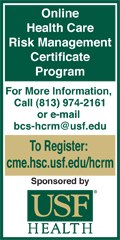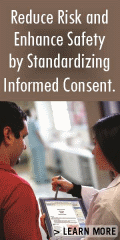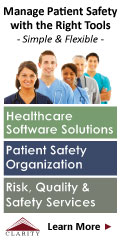 |
 |
 |

May / June 2008

Safety and Satisfaction:
Where are the Connections?
By Robert J. Wolosin, PhD
Patient safety and patient satisfaction should go hand-in-hand. Hospitals ought to be able to provide care that is safe and meets or exceeds patient expectations for service quality. Similar practices (e.g., open communication among staff members) and values (e.g., patient- and family-centered care) contribute both to safety and satisfaction. Nurses who are themselves satisfied and engaged, and who can spend sufficient time at the bedside, should know their patients better, learn their patients' vulnerabilities, and have the time and energy to ward off potential harms. At the same time, such nurses are in a better position to address patients' and families' psychosocial needs — a consistently powerful driver of patient satisfaction (Donabedian, 1988; Gerteis, Edgman-Levitan, Daley & Delbanco, 1993; Press 2005).
Recently published literature offers hints about connections between patient safety and patient satisfaction. To review it briefly:
- In October 2005, the Joint Commission's Journal on Quality and Patient Safety published a series of case studies of healthcare institutions' efforts to improve both quality and safety. One of these was from Lehigh Valley Hospital in Allentown, Pennsylvania, which used active engagement of patients and families in attempting to improve patient safety (Anthony, Ritter, Davis, Hitchings, Capuano, & Mawji, 2005).

- Blegen, in the 2006 Annual Review of Nursing Research, cited several earlier works that investigated both safety and satisfaction as they respond to levels of nurse staffing (Blegen, 2006).

- Weingart and colleagues (2006) examined inpatients' reports of service "incidents" — deficiencies in service quality such as waits/delays, poor communication, poor care coordination, lack of respect for personal preferences, or environmental issues. They found that roughly 40% of patients reported at least one incident and that reporting of incidents was associated with diminished patient satisfaction. Although the authors did not tie their results to adverse events that happened to the same patients, it does not require much imagination to link service deficiencies such as poor care coordination and poor communication, to an increased risk of suffering an adverse event.

- Meade, Bursell, and Ketelsen (2006) conducted a quasi-experimental study of the effects of a specific nursing practice on patient falls and patient satisfaction. Nurses rounded on their patients either at 1- or 2-hour intervals; they used a standard protocol that included multiple actions (e.g., assessment of pain, offering toileting assistance, assessment of need to reposition the patient). The authors found a significant reduction in patient falls for hourly rounding and a significant increase in patient satisfaction for both intervals. Although it was not a true experiment with random assignment of units to conditions, the study nonetheless offers evidence that safety (as indexed by patient falls) and satisfaction respond similarly to enhanced nursing activities.

- Weingart's group reported on oncology patients' perceptions of adverse events during outpatient treatment. Patients tended to classify service quality incidents as adverse events, even when they understood the constituents of safe practice (Weingart et al., 2007). Thus, patients associate safety and quality.

- Wong and Cummings (2007) reviewed seven quantitative studies of the relationship between nursing leadership and patient outcomes. They found significant associations between positive leadership behaviors and both increased patient satisfaction and reduced adverse events.

- Williams, Manwell, Konrad, and Linzer (2007) examined the physician side of the quality equation. Physicians in ambulatory clinics in the upper Midwest and New York City were asked to rate their practice's culture along several dimensions, as well as their own job satisfaction, level of burnout, provision of suboptimal care, and the likelihood of making errors in the future. They found that a practice culture that emphasizes quality decreases physician estimates of both their likelihood of making errors and their delivery of suboptimal patient care, including failure to meet patient needs for information — an important driver of patient satisfaction.

- Kaldenberg and Trucano (2007) examined facility-level relationships between hospital-acquired infection (HAI) rates and patient perceptions of specific aspects of hospital quality in the State of Pennsylvania. Specifically, they chose three questions from an inpatient survey thought to measure practices that, when poorly executed, could create a more infection-prone environment: ratings of cleanliness; of the skill of the person who took the patient's blood; and of nurses' response to the call button. All three were found to be significantly, negatively correlated with HAI rates

- A direct examination of the correlation between overall inpatient satisfaction scores and overall employee ratings of patient safety from the same set of hospitals found a substantial relationship (Wolosin, 2007).
Thus, there is evidence that patient safety and patient satisfaction are linked. At this time, however, little is known about specific features of a hospital's culture associated with this link. This article explores the basis of the safety-satisfaction link by analyzing data from surveys of patients and employees from the same hospitals.
Survey Instruments
Two survey instruments were used. The Press Ganey Inpatient Survey, initially developed in 1987 and revalidated in 2002 and 2007, is structured around a typical hospital visit, starting with admission. It inquires about important hospital events, processes, people, and how well the patient's psychosocial needs were addressed. The survey has been described more completely elsewhere (Gesell, Clark et al., 2005; Kaldenberg, Mylod, & Drain, 2003).
Press Ganey's Safety Culture Survey was adapted from a public-domain instrument developed by the Agency for Healthcare Research and Quality (AHRQ) in 2004. It assesses hospital's culture of safety by inquiring into the individual/group values, attitudes, perceptions, and patterns of behavior of the staff. Psychometric properties of the original AHRQ survey tool can be found in Sorra and Nieva, 2004; those of the adapted instrument are available from the author.
The Safety Culture Survey is based on the premise that the safety of patients depends heavily on employee practices within hospital units. These include open communication across staff levels, teamwork within and between units, a non-punitive response to errors, and the ability to learn from errors. In addition, respondents are asked to estimate how frequently various types of mistakes are made and the number of event reports they submit, and to grade their unit's safety on a scale from Excellent to Failing.
Table 1 summarizes the salient characteristics of the instruments.
|
 |
 |
 |


















|
 |

